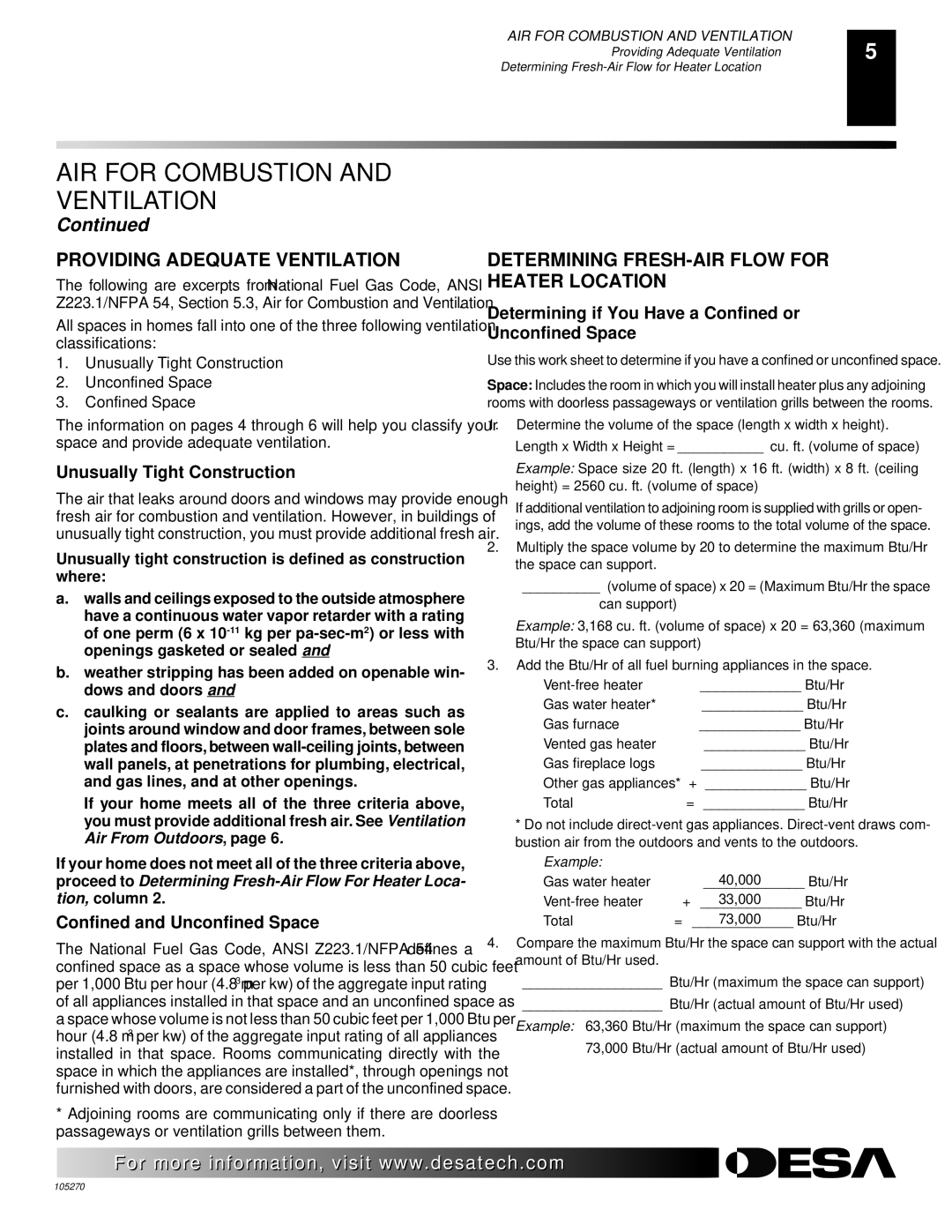FPVF33NR, VYGF33NRA, VYGF33PRA specifications
Desa VYGF33PRA, VYGF33NRA, and FPVF33NR are innovative heating solutions designed to provide efficient and effective warmth for residential and commercial spaces. These models stand out due to their advanced features, modern technologies, and reliable characteristics.The VYGF33PRA and VYGF33NRA variants are characterized by their versatile design, allowing them to seamlessly fit into a variety of settings. They are equipped with high-efficiency heating elements that ensure optimal heat distribution. These models utilize advanced heat exchanger technology, which not only improves efficiency but also minimizes energy consumption. This makes them an eco-friendly choice for those looking to reduce their carbon footprint without sacrificing comfort.
Safety is a top priority with these models, featuring built-in safety mechanisms like overheat protection, tip-over switches, and thermal cut-off features. This ensures that users have peace of mind while operating the units, particularly in child- or pet-friendly environments. Additionally, the user-friendly interface, complete with intuitive controls, allows for easy setting adjustments and temperature monitoring.
The FPVF33NR model also showcases remarkable features that appeal to modern consumers. It incorporates advanced digital technology, allowing for programmable settings and remote control capabilities. Users can easily adjust heating schedules, enhancing convenience and efficiency.
The energy efficiency rating is another highlight of these models. With features like smart thermostats and energy-saving modes, they are designed to minimize energy usage without compromising on performance. This not only helps in reducing utility bills but also aligns with sustainable living practices.
Moreover, these heaters are built to last, featuring durable materials that ensure longevity and reliability. The aesthetic design is appealing, allowing them to complement any interior décor effortlessly.
In conclusion, Desa VYGF33PRA, VYGF33NRA, and FPVF33NR deliver superior heating performance, user-friendly technology, and thoughtful safety features. Their combination of efficiency, durability, and modern design makes them an excellent choice for anyone in need of dependable heating solutions. Investing in these models will not only enhance comfort but also contribute to a more sustainable energy future.

